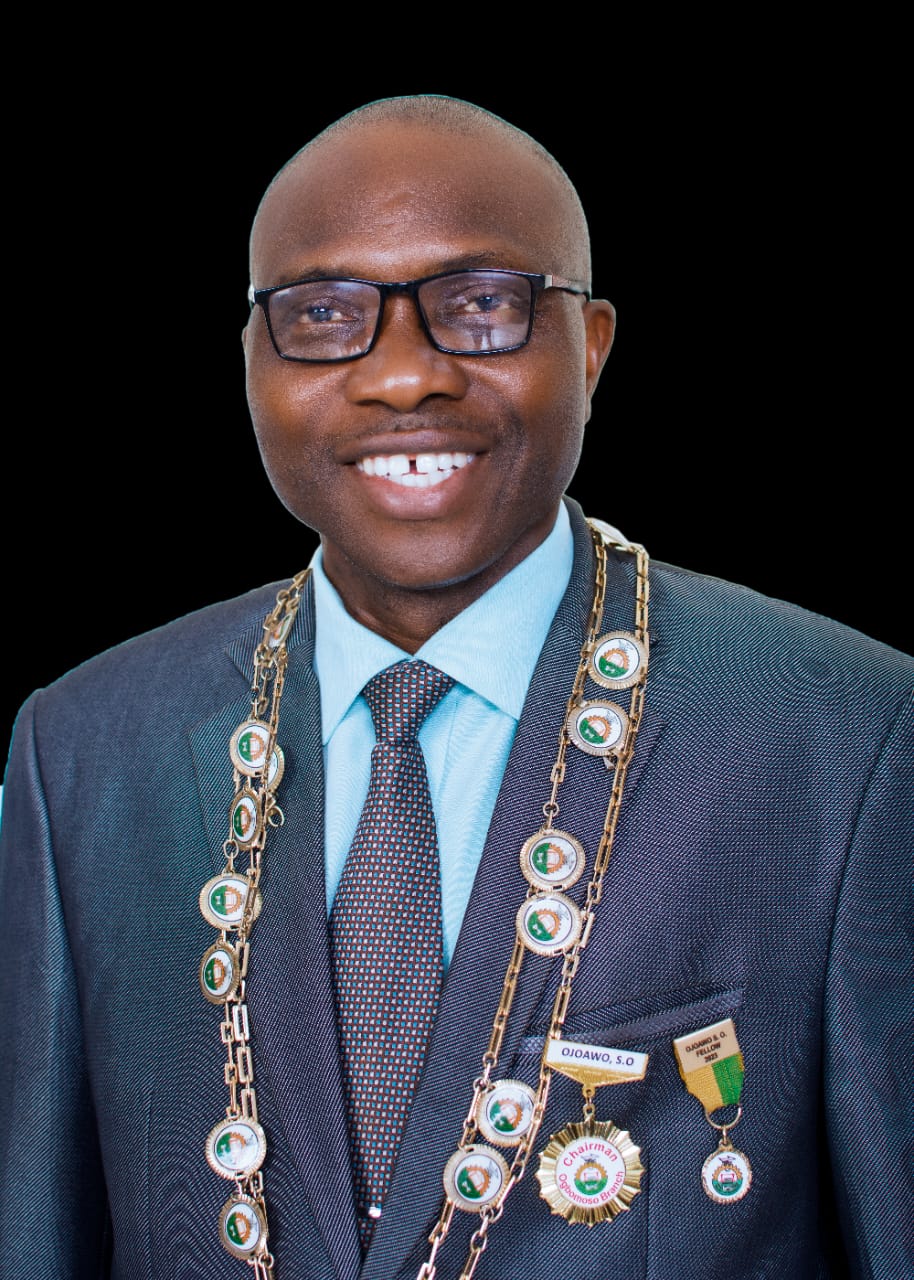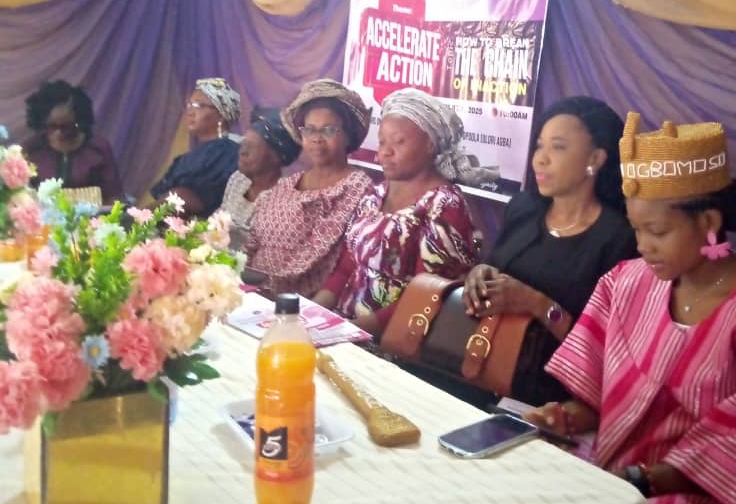Stranded trucks: Disease outbreak, flooding imminent in Ogbomoso – Don raises alarm
Femi OGUNLANA
Advertisement
A university don Professor Samson Olakunle Ojoawo has raised alarm that unless something urgent is done, the city of Ogbomoso in Oyo state may be engulfed in environmental hazards that may precipitate disease outbreaks and flooding.
Prof Ojoawo of the Department of Civil Engineering, Ladoke Akintola University of Technology (LAUTECH), Ogbomoso, expressed this concern a week ago while featuring on a radio programme “Ogbomoso La wa” sponsored by The Akogun of Ogbomosoland, Chief (Dr). Air Vice Marshal Jacob Adigun (rtd) and Associates, and anchored by Soji Abiojela.
Speaking on the topic, “Flood control in Ogbomosoland: an Engineering perspective,” the Professor of Civil Engineering, noted that a situation in which heavy duty vehicles are stranded for an upward of four days in a clime there are no public toilets or bathrooms and people’s attitude towards hygienic living is zero, vulnerability to environmental hazards which could be devastating and disastrous, becomes greater.
He pointed out that each of the articulated vehicles have three to four persons on board, and in a scenario you have 1, 000 vehicles stranded for four to five days, real environmental menace is constituted in the sense that those people would have to answer the call of nature, just as he underlined that their other activities would litter the environment with uncontrolled wastes, blocking drainage and water channels.
Advertisement
He stated this will predispose the environment to flooding, therefore urging the federal government and other concerned authorities to address the problem.
“In view of the number of articulated vehicles stranded in Ogbomoso because of the current state of the road, serious challenge and threat are posed. When you have about 1, 000 articulated vehicles, and there are at least three or four persons in each, that is some 4, 000 people stranded,” he said.
“And there is no toilet, no bathroom, and those people have to answer the call of nature, so they resort to defecating everywhere. They also generate wastes and litter everywhere, and all these find their way into water courses and canals. People defecate everywhere and you find disgusting stench oozing here and there. And when you have rainfall, culverts and drainage channels are blocked and this can lead to flooding.
“So, we appeal to government and those concerned to see to this road’s rehabilitation because the present situation can precipitate a lot of things, apart from transportation and movement inconveniences.”
Meanwhile, Ojoawo highlighted the causes of flooding and control measures that could be deployed to tackle the menace, from the angle of engineering.
He explained that flood can be categorized into three based on their sources, namely: indoor flooding, outdoor flooding and neighbourhood flooding, asserting the third one is often provoked by nearby streams and rivers whose courses are inhibited from free flow, as well as by inadequate neighbourhood drainage channels.
He lamented that the United Nations Office for the Coordination of Humanitarian Affairs in a recent publication affirmed that only 5 of the 36 states of the federation are not prone to flooding at present though adding that the remaining “five too have no guarantee of what will happen.”
“This is as it is stated that over 1.2m people have been affected by flooding resulting in losses of houses and properties while 300 lives have been lost, this year alone.”
According to him, the four components of the environment including hydrosphere (water and aquatic sources), atmosphere (sky, cloud, air), biosphere (living things: plants and animals) and lithosphere (soil, rock, mountain) are all being negatively affected by flooding.
He added, “In the UN Sustainable Development Goals, SDGs, which are 17, nine of them are being affected by flooding according to the literatures,” to underscore the menace posed by flooding.
Among others he listed these as Goals numbers 1, 2, 3, 4, 6, 8, 11, 14 and 15, which respectively are no poverty, zero hunger, good health and well being, quality education, clean water and sanitation, decent work and economic growth, sustainable cities and communities, life in water and life on land, asserting that all these are at the mercy of flooding and therefore called for government’s urgent intervention.
Advertisement

He insisted the reality of the problem as witnessed in Ogbomoso recently when some areas were flooded, shows that “we can’t fold our arms,” while highlighting the two main control measures of flooding including non-structural and structural cum engineering solutions.
Prof Ojoawo stressed that non-structural measures involve advocacy, public enlightenment, awareness campaign, governmental policies like creating buffer zone, green area and so on.
He mentioned channelization as one of the important structural methods used to control flooding. “First is channelization and drainage, to ease water flow, because water will always have its way. So, if this (drainage) is well provided, water will flow unhindered and causes no problem, but without this it will be difficult.”
Other measures he listed to control flooding include dam and embarkment, gabion wall stones (which he noted however is not common here), dykes and levees, stone pitching, bio-engineering (the vegetative approach or afforestation), barrier trap bags among others noting some of them are measures adopted “by our forefathers.”
Saying he would focus more on channelization, he stressed its effectiveness is however hinged on certain intricacies bordering on engineering, while emphasizing, “Many feel constructing drainage is simple but it is not, many things need to be taken into consideration to ensure it’s effectiveness. It has to start with feasibility studies, that is gaining prior understanding of the water path and volume of water, this will guide and help when designing in order to make the measure suitable, it will also help in determining the depth, width and length of the channel which dictate the volume or else the drainage will not serve the purpose effectively.”
He continued, “Another factor is the design capacity, we need to know what the capacity of the drainage is? What are the catchment areas, the tributaries and adjoining streams? All these must be looked into when designing a drainage. Another one is appropriate material selection (concrete, reinforced concrete, block wall or reinforced block wall?) Masonry needed? Hardcores needed to be set? Pipes preferred? What types of pipes (metal, reinforced PVC or asbestos?
“Another factor is determination of the drainage cross-sectional area – rectangular, semi-spherical (u-channel), triangular (v-shaped channel), but the one found to be the most effective is trapezoidal channel, shaped like trapezium. This trapezoidal channel most times can accommodate more water, owing to its wider surface and flat bottom width.
“Another factor we have to consider is the flow continuity,” which he stated, must take into account the levels of the ground, “in order to ensure free flow of water especially in a row of houses. If there are six houses for instance and let’s say house number three owner wants to construct drainage, the professional thing is to take the level right from house number one then flush it to the 6th one, and every other person maintains it when they are ready to construct their own too but we don’t usually see this and such affects flow continuity leading to ponding of water along the channel.”
“We must also consider the roughness co-efficient and the degree of meandering, that is, we must ensure gentle bend in the drainage and avoid sharp one to prevent the drainage from faili, which reflects in water overflowing at the sharp bend. That is another technicality.
“Another thing is appropriate flow velocity, water has a cumulative speed, and so the design must ensure velocity is neither too fast nor too slow to avoid scouring failure, that is, wearing off of the drainage sides and floors (when the speed is fast), and sedimentation failure when its velocity is too slow.”
On a final note, he advocated that a professional should always be engaged when contemplating constructing drainage just as he emphasized adequate maintenance of drainage, which he disclosed involves “regular clearing, cleaning, dredging, and evacuation of debris deposited at the channels banks/top sides from time to time.” 
Brief on Prof Ojoawo:
Engr. Prof. Samson Olakunle Ojoawo, FNSE, FNIEE, FNICE, AMASCE, who delivered the 58th Inaugural Lecture of LAUTECH in July this year titled “Water, water everywhere but not a drop to drink: environmental engineering techniques as panacea,” holds B.Tech Civil Engineering, LAUTECH, M.Sc and Ph.D Civil Engineering, of the University of Ibadan, Ibadan. He is a Professor of Civil Engineering, Faculty of Engineering and Technology, LAUTECH, Ogbomoso, and he is a Registered Engineer with the Council for the Regulation of Engineering in Nigeria (COREN Regd. Engr). Also, he is a Fellow, the Nigerian Society of Engineers (FNSE); Fellow, the Nigerian Institution of Environmental Engineers (FNIEE) and Fellow, the Nigerian Institution of Civil Engineers (FNICE). He is Associate Member, American Society of Civil Engineers (AMASCE) and Postdoctoral Fellow, NMAM Institute of Technology, of the Visvesveraya Technological University, Belgaum, Karnataka State, India. He is the current Chairman, the Nigerian Society of Engineers, Ogbomoso Branch and also the Chairman, LAUTECH Project and Facility Monitoring Committee.
An ordained Deacon of the Nigerian Baptist Convention, Chairman of Deacon’s Fellowship Mercyland Baptist Church, Maryland Area, Ogbomoso, Board Member, Salako Maven Foundation International, and Member, Rotary Club International, he is happily married to Dns. Dr. Olubunmi Titilayo Ojoawo, with children.





